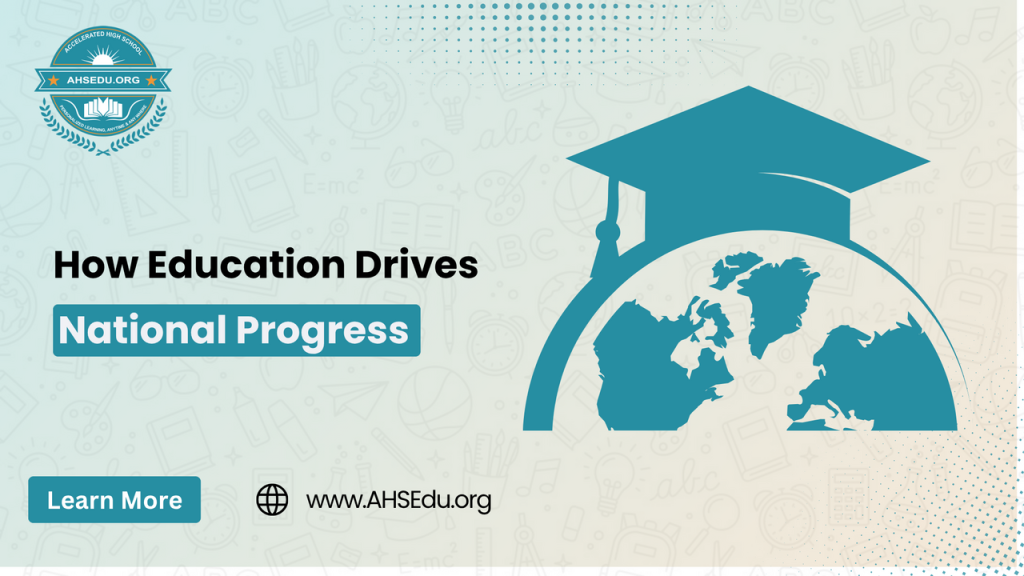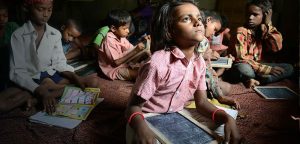
Investing in elementary through secondary schooling yields massive dividends for society. The UN’s UNESCO stresses that “education is one of the most powerful investments for sustainable development” because it “reduces poverty, drives economic growth, improves health and gender equality, and promotes peace”. Likewise, the World Bank describes education as “one of the strongest instruments for reducing poverty and improving health, gender equality, peace, and stability”. In short, educating youth builds human capital and lays the foundation for economic progress.
At the individual level, better education translates into higher incomes and job opportunities. Empirical studies show that each additional year of schooling raises wages by roughly 10% on averages. For nations, a more educated workforce spurs long-term economic growth, innovation and competitiveness. World Bank research notes that countries investing heavily in primary and secondary education “have been able to contribute to advances in science and knowledge and create new products and technologies,” which in turn underpins future economic leadership. In short, well-educated children grow into productive adults who generate tax revenue, start businesses, and innovate, boosting national prosperity.
Education also yields broad social and health gains. Literate, educated populations tend to have better public health (as people follow medical guidance), lower crime, and more civic participation. It promotes gender equality: UNESCO reports that schooling for girls leads to better health and empowerment for entire communities. Social stability is another payoff; societies with higher education levels enjoy greater social cohesion and are less prone to conflict . In developing countries, every year of schooling significantly lowers poverty rates – a key Sustainable Development Goal – by equipping children with knowledge and skills to break the cycle of deprivation. As a World Bank economist put it, “Learning remains one of the most critical assets for any country to promote equitable growth and poverty reduction,” emphasizing that this cannot occur “without a solid foundation” in basic education .
Global Trends & the Learning Crisis
Thanks to worldwide efforts, school enrollment has risen dramatically over recent decades. According to UNESCO and the World Bank, global primary-school enrollment climbed from 72% (1970) to 89% (2018), and secondary enrollment from 54% (1998) to 66% (2018). More children than ever are starting school, especially in Asia and Latin America.

However, a major learning crisis persists. Over 250 million children remain completely out of school today. Even among enrolled children, many are not mastering basic skills. In low- and middle-income countries, roughly 7 in 10 kids cannot read a simple paragraph by age 10 – a statistic that jumps to 9 in 10 in some parts of sub-Saharan Africa . These deficits translate to huge economic losses: one analysis projects school closures and poor learning outcomes could wipe out $17–21 trillion in future global earnings. In other words, millions of potential innovators and workers are being left behind simply because of weak schooling.
Despite these challenges, the upside is clear: even modest improvements in education yield outsized benefits. For example, studies show that assuring even basic literacy and numeracy in primary school dramatically increases a country’s skilled labor pool and future growth potential. Similarly, healthier, better-educated youth reduce social welfare costs later in life. In effect, countries that can improve their elementary and high school systems — from enrolment to quality teaching — are investing in decades of future economic progress.
Successful Education Strategies Worldwide
Some nations have pioneered specific education approaches that other countries can learn from. Below are global examples focused on K–12 (elementary through high school) that have driven strong outcomes:
• Finland – Equity and Teacher Quality: Finland famously tops international assessments while spending about 30% less per student than the U.S . How? Finnish schools delay formal academics (children start 1st grade at age 7, with minimal homework) to focus on learning-to-learn skills. They emphasize equity over competition: all children (regardless of ability) learn together in mixed classes, minimizing gaps. Finnish teachers are elite: most hold master’s degrees and have high autonomy. There is no standardized testing in the early years. This holistic, low-pressure model produces deep understanding and has led to ~66% of Finnish students pursuing college (the highest rate in Europe). Key takeaways: invest in top-tier teachers, teach with the child’s pace in mind, and promote collaborative learning.
• Singapore – Rigorous Standards and Support: Singapore consistently ranks among the world’s top PISA performers. In 2022, 41% of Singapore’s 15-year-olds scored at the highest levels in math (versus 9% OECD average). Singapore’s success rests on a strong national curriculum, with intensive training for teachers and abundant school resources. Classes emphasize math, science and English while tracking individual student progress. The system also provides extensive support (tutoring, extracurricular STEM programs) for students who need it. Practically every Singaporean child masters basic literacy and numeracy: over 90% reach minimum proficiency in reading and math. The lesson: high standards + strong support works. Clear benchmarks and regular updates to the curriculum keep students on track for future high-tech careers.
• Kenya – Curriculum Reform and Investment: In Kenya, bold policy changes rapidly improved education access and quality. From 2017–2019, Kenya added 11% more pre-schools and 17% more secondary schools, making primary education nearly universal and raising secondary enrollment by 50%. The government implemented a competency-based curriculum, retrained teachers, improved local school management, and supplied more textbooks. Crucially, Kenya greatly increased education spending: today its education budget as a share of GDP is among the highest in Africa. These reforms made Kenya a regional leader in literacy and numeracy, with notable gains in early-grade reading and math. Kenya’s example shows that strategic reforms plus sustained funding – even in a low-income country – can yield near-universal K–12 attendance and rising achievement.
• Cuba – Universal Schooling & Literacy: Cuba built one of the world’s most successful education systems from scratch. Before 1959, literacy was only ~60–70%. After revolutionizing education policy, by the 1960s Cuba ran a year-long national literacy campaign and trained hundreds of thousands of teachers. Today Cuba boasts a 99.9% literacy rate – the world’s highest. Education is free and compulsory up to age 15, with class sizes around 25 students. Dropout rates are below 1% and 98% of Cuban children attend kindergarten or primary school. This universal model – guaranteed access for every child, plus after-school help for those with disabilities – shows how free, inclusive schooling lifts an entire nation. Literacy opened the door for Cubans to learn advanced subjects, ultimately strengthening the economy and public health. Key lessons: commit to education for all children, eliminate financial barriers (every level is free), and provide equal resources (even rural schools have electricity and internet).
• India – School Feeding Programs: Practical measures can boost both enrollment and learning. India’s Mid-Day Meal Scheme feeds over 100 million schoolchildren daily. Research shows that longer exposure to these free meals significantly improves learning. In one study, children who received a school lunch all five years of primary school scored 18% higher in reading and 9% higher in math than those who did not. The meals increase attendance (hungry kids come to eat) and improve concentration. As a result, this program reduced dropouts and raised test scores, especially in impoverished areas. The takeaway: addressing students’ basic needs (food, health) can dramatically enhance the impact of classroom teaching on national learning levels.
• Mother-Tongue & Inclusive Language Policies: Globally, teaching children in a language they speak greatly boosts learning. UNESCO reports that African pupils taught in their familiar language were 30% more likely to read with comprehension by the end of primary school compared to those taught in an unfamiliar tongue. In Mozambique, shifting to bilingual education (local language + second language) increased overall learning rates by 15%. Such policies prevent early-age comprehension gaps: children grasp basics faster if instruction uses their mother tongue in early grades. This approach also keeps girls and marginalized groups in school longer (since it feels safer and more relevant). For countries with many languages, adopting multilingual education strategies is a proven technique to raise literacy and numeracy, thereby improving national education outcomes.

These examples span continents and cultures, but they share key principles: quality teaching, broad access, and addressing learners’ needs. Whether through Finland’s teacher-centric model, Singapore’s rigor, or India’s nutrition support, the goal is the same – to ensure every child completes a strong K–12 education. The evidence is clear: children educated to at least high school send dividends back to their countries in higher GDP, better health and a more stable society.
Advancing Education with New Tools
To replicate these successes, countries need effective tools and partnerships. Digital and nonprofit platforms can scale proven curricula at low cost. For instance, AHS Education (AHSEdu.org) offers a completely free, standards-aligned K–5 digital curriculum that can be used worldwide. Nonprofits and schools serving underserved communities can deploy AHS’s interactive lessons (with online or offline access) to give children a high-quality education even with limited resources. By integrating such resources into national education strategies, countries can accelerate learning gains in early grades – a foundation that carries forward into high school and beyond.
In short, achieving national progress means prioritizing every child’s education. Investments in elementary and secondary schooling yield enormous returns for society as a whole. Policymakers can follow the lead of high-performing countries: recruit and train top teachers, make schooling accessible to all genders and regions, connect learning to real-life skills, and support students’ health and language needs. Tools like AHS Education provide one piece of this puzzle by delivering quality content to young learners. As the World Bank emphasizes, “learning is one of the most critical assets for any country,” and a solid education foundation is essential for equitable growth. By combining global best practices with innovative solutions like AHSEdu.org, countries can ensure their children – and their economies – thrive.

AHSEDU.org offers personalized learning for every student. With a curriculum standardized with USA State Standards, Free interactive videos, Fun and interactive learning content, Constructive assessments, and take-home worksheets we address the unique educational needs of each learner to ensure success.